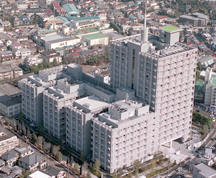About us

The role of NHK Science & Technology Research Laboratories (STRL) is to build a richer broadcasting culture from a research and development viewpoint, both as Japan's only research organization dedicated to broadcast technology, and as part of Japan's public media organization NHK. NHK STRL conducts a wide range of both basic and applied research in broadcasting technology to fulfill this role. NHK STRL has led to creating new broadcast media, including satellite broadcasting, HDTV, and 8K, and has contributed to advancing program production technologies. We continue such research today, anticipating challenges the future will bring.
The history of STRL
| 1925 | Radio broadcasting starts in Japan |
|---|---|
| 1926 | NHK established |
| 1930 |  STRL opens STRL opens |
| 1950 | Research starts on color broadcasting |
| 1953 | TV broadcasting starts |
| 1960 | Color broadcasting starts |
| 1964 |  HDTV research starts HDTV research starts |
| 1966 | Research starts on satellite broadcasting |
| 1971 |  Research starts on plasma displays Research starts on plasma displays |
| 1978 | Launch of first broadcast satellite |
| 1982 | Research starts on digital broadcasting |
| 1989 | Analog satellite broadcasting starts |
| 1991 | Analog HD test satellite broadcasting starts |
| 1995 |  Research starts on UHDTV Research starts on UHDTV |
| 1998 |  Development of a 42-inch plasma TV Development of a 42-inch plasma TV |
| 2000 | Research starts on 4000-scanning-line TV (8K) Digital satellite broadcasting starts |
| 2003 | Digital terrestrial broadcasting starts |
| 2013 | “NHK Hybridcast” integrated broadcast-broadband service starts |
| 2016 | 8K test satellite broadcasting starts |
| 2018 | 8K satellite broadcasting starts |
STRL Open House
 In May of each year, we hold the STRL Open House exhibition to have a chance to present the results of our R&D that is publicly funded by fees received from TV viewers. This event welcomes many visitors, ranging from families to researchers from manufacturers and other research organizations.
In May of each year, we hold the STRL Open House exhibition to have a chance to present the results of our R&D that is publicly funded by fees received from TV viewers. This event welcomes many visitors, ranging from families to researchers from manufacturers and other research organizations.
